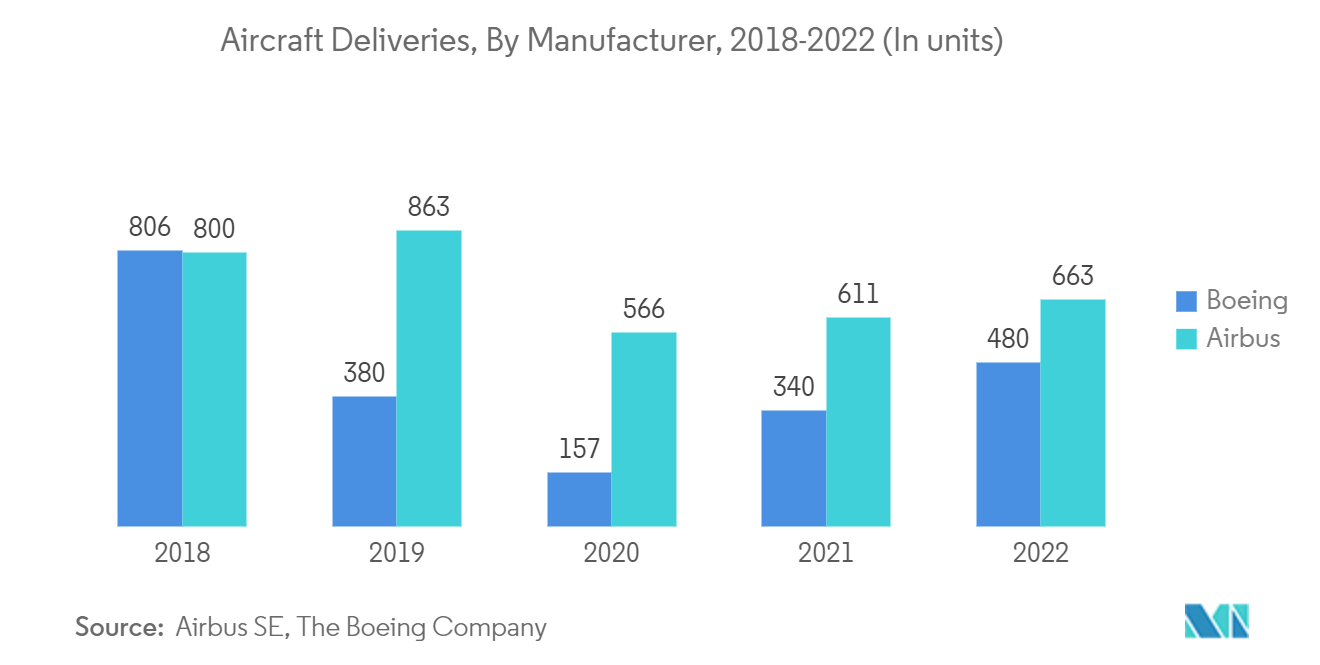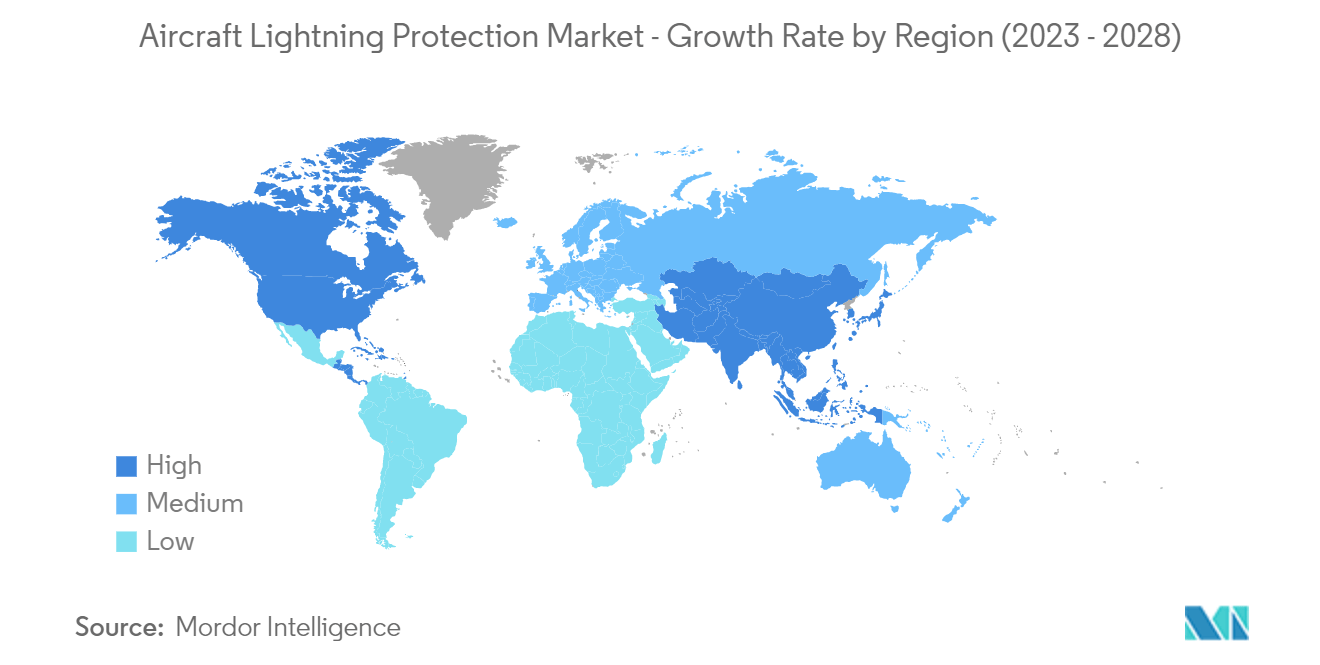Market Trends of Aircraft Lightning Protection Industry
Commercial Aircraft Segment to Dominate the Market During the Forecast Period
- The commercial aircraft segment is expected to dominate the market during the forecasted period. In 2020, there was a decline in commercial aircraft deliveries due to the COVID-19 pandemic. However, aircraft deliveries improved in 2021, and the major commercial aircraft original equipment manufacturers (OEMs), like Airbus and Boeing, increased their aircraft production and delivery rates. With the lifting of travel restrictions, air passenger traffic is improving.
- In 2021, more than 2.3 billion people traveled by commercial airlines around the world. The rise in air traffic is prompting airline operators to initiate procurement drives and place orders for new-generation aircraft.
- For instance, in July 2022, Alaska Airlines placed an order for 52 Boeing B737 MAX aircraft with a plan to expand its fleet. The airline stated that by the end of 2023, it is expected to have an all-Boeing mainline fleet. Such orders from commercial airlines may generate demand for aircraft lightning protection, which, in turn, is anticipated to propel the growth of the market during the forecast period.

North America to Dominate the Market During the Forecast Period
- The aerospace industry in the region is mature and strongly supported by a robust aviation base. Higher air traffic has resulted in the procurement of several aircraft by regional and international airline operators. Boeing, one of the major aircraft original equipment manufacturers (OEMs) based in the United States, generates a huge demand for aircraft systems.
- Moreover, In 2022, the United States released the Department of the Air Force budget, which outlined that for FY23, the budget request is approximately USD 194.0 billion, a USD 20.2 billion or 11.7% increase from the FY22 request. For the defense budget 2023, USD 56.6 billion (20% of the defense budget) has been requested to procure aircraft and related systems, of which USD 23 billion is for combat aircraft and USD 5 billion is for Transport/Cargo Aircraft.
- A significant portion of the defense budget is allocated for F-35 jets, B-21 Raider bombers, KC-46A Pegasus tankers, and other helicopters. Some of these new aircraft will replace the existing fleet that has been operational for over 50 years. As the United States is looking to shift toward a younger fleet, the armed forces have requested to retire some old aircraft models and divert spending toward purchasing new advanced aircraft. Factors such as these are driving the market for aviation and, in turn, the aircraft lightning protection market.


